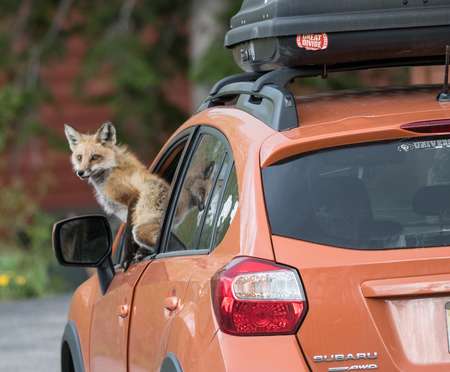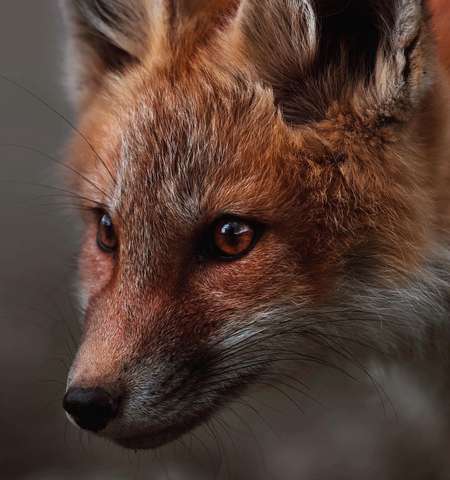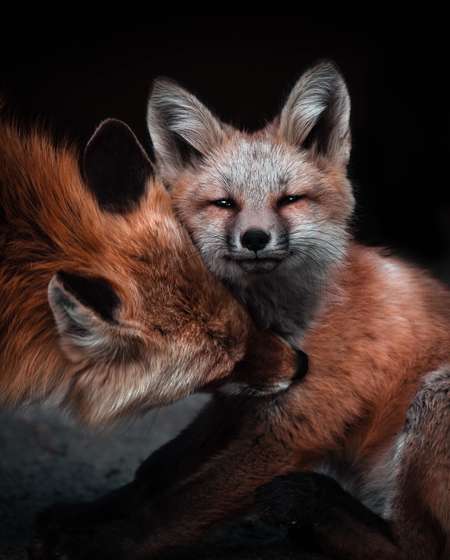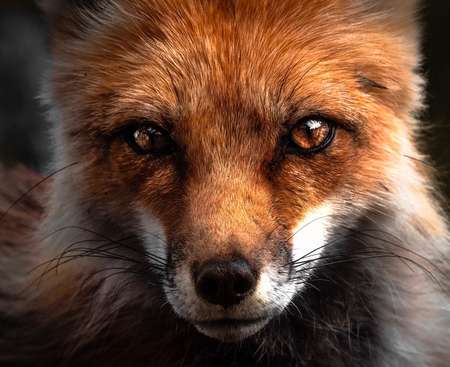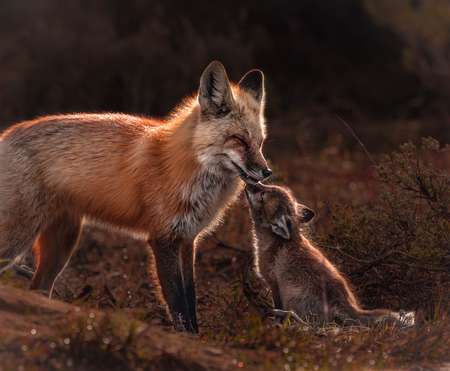Just like the stories told by weathered fishermen and seasoned hunters, wildlife photographers have their story of “the one that got away.” The day they stumbled upon a bear wandering the parking lot of their office complex, only to remember they left their camera at home. Or the day they went for a Sunday drive through the countryside, spotted a buck in the afternoon sun, pulled their camera out of their backpack, and saw the error all photographers dread: “no card in camera.” But it is this elusiveness that makes wildlife photography as rewarding as it is challenging. Photo opportunities may only last a few fleeting seconds, and there is almost no room for error when your subject appears. By utilizing some of my tips and tricks below, I hope you will come away from your wildlife encounters with at least one or two keepers.
THE SUBJECT
Foxes are one of the most “universal” species of wild animal for photographers to practice shooting. They can be found in all different climates, and thrive in cities as often as they thrive in thick forests and remote deserts. In order to capture a fox’s wild beauty, it is important to understand their behavior.
- Scouting is essential to finding out where foxes live. Scouting can consist of driving through neighborhoods while looking for that flash of red fur beneath someone’s deck, following fox tracks through a snowy forest, or making a post on your community’s Facebook group asking if anyone has spied any in their yard recently.
- Understand what foxes are up to each season. For example, in the spring, foxes are usually “denned”. A “denned” fox is a fox which has returned to its den to raise its spring pups. This is an optimal time of year to photograph them, because once you know where a fox’s den is, you know where they will be in the mornings and evenings when they’re not out hunting. Foxes are creatures of habit and usually return to the same dens year after year. This is also the time of year when foxes have their pups. Fox pups can be one of the most dynamic and exciting subjects to take photos of!
- Think about what you know about fox behavior, and what you know about natural light. Foxes are a great subject because they are typically most active when the natural lighting is optimal. Early morning as the sun is rising and evening as the sun is beginning to approach the horizon are when foxes are outside the den basking in the sun, or playing among fallen leaves, or sniffing for mice under a layer of fresh snow. Aim to shoot at these times.
- Expect the unexpected. Wildlife behavior can sometimes be predicted, but by no means do foxes keep a schedule. You need to be ready to shoot at any moment. Before you even arrive to your location, take the camera out of the backpack and remove the lens cap. This way, you are ready for anything that may cross your path. Once, while waiting for fox pups to emerge from their den, I heard a sound coming from my car behind me. I turned around just in time to capture a once in a lifetime shot of an adult fox sneaking into my car in search of snacks!
No matter how prepared you are, how much research you do, or how many hours you spend scouting for fox hot spots and dens, always remember that there is a chance the foxes just won’t make themselves visible for you. In my career, I have visited 4 or 5 different dens for days on end and never came up with a single fox photo. Don’t let this discourage you. Getting the shot requires patience and dedication, not just technical skill. As you sit by the fox den waiting for something to happen, keep an eye out for birds hanging out on branches, or the neighbor’s cat prowling the rooftops. Take the opportunity to practice on these secondary subjects while you wait.
THE COMPOSITION
You’ve found your fox. It is 4pm on a winter afternoon, you have an hour and a half before the sun dips below the horizon. The lighting is getting better with every minute. The fox is curled in the snow enjoying the sun, and doesn’t seem to mind your presence.
Most likely, you started shooting the second you arrived on scene. This is good. You need to utilize every second that your elusive subject is in view. But now that you’ve captured the first round of shots, it is time to slow down and think about your composition.
Get eye level. There is a huge difference between shots taken from a standing position above your subject, and shots taken when you are down on their level. Hold you camera so that it is level with the fox’s eyes, and swivel your back screen so you can still see the frame. As the fox lifts or lowers its head, move the camera with it.
Make it wild. If you’re shooting foxes in a neighborhood or yard, work your angles to eliminate man-made structures from the shot. Move slowly and quietly so as not to disturb your subject, but really work those angles to present the fox in the wildest way possible.
Be playful. Foxes are playful animals, so wildlife photographers must be too. Play with your settings, your framing, and your zoom as much as you can in the moment. Zoom in close as the fox stares you down, capture the reflection of the tress in her eyes. Zoom out again as she grooms her pup, capture as much of the two foxes as you can in the frame.
Stay ethical. Taking portraits of foxes is much harder than taking portraits of humans or pets. Wild animals don’t obey commands, and this can leave you feeling frustrated when the fox won’t lift his head or stand in a place that compliments the light. It can be tempting to bait a fox to stand in a certain spot with treats, or make noise to make them lift their heads. But the goal of every wildlife photographer must be to capture nature’s beauty while preserving the wildness of your subject. Baiting foxes or disturbing them with noise is not ethical. An experienced wildlife photographer can spot a photo of a baited animal from a mile away. Enjoy the challenge of working with a subject you can’t control, and take pleasure from the moments the timing truly does match up.
CAMERA SETTINGS
Focal length is key in photographing foxes. Some fox populations that are used to humans will allow you to shoot them from closer range, while foxes that don’t see people often will demand that you keep your distance. Remember, your goal as a wildlife photographer should be to capture nature’s beauty while preserving the wildness of your subject. Investing in a telephoto lens may sound pricey at first, but worth it when you consider it against the environmental cost of stressing a population of wildlife, the price tag doesn’t seem as daunting.
Here is my typical gear and recommended settings:
- Camera: OM-D E-M1 Mark II
- Lenses: M.Zuiko 12-40mm F2.8 PRO if I am photographing a population that are comfortable around humans. M.Zuiko Digital ED 300mm F4.0 PRO if I know my subjects are more shy or skittish. You can use a tripod, or you can freehand the shot if you utilize the image stabilization both in-lens and in-body.
- Mode: Manual
- Shutter speed: 1/250-1/1000s depending on the light and activeness of the fox
- Aperture: F2.8-F5.6 – a larger aperture will blur the black ground and help your fox stand out
- ISO: I adjust this throughout the shoot depending on the settings above and the ever-changing light
- Continuous Shooting Mode
- Focusing: S-AF
- Pro Capture: My Mark II enables me to shoot with Pro Capture mode. When you press the shutter half way down, the camera is recording the moments a few seconds before and after when you press the shutter all the way down. This helps capture those fleeting moments when a fox pounces for a mouse, or wrestles with his foxy brother.
Instagram: @brookelittlebear
Brooke is a wildlife photographer based out of Salt Lake City, Utah. She has always been a lover of animals, and when she first began shooting she was naturally hooked on photographing wildlife right from the start. Her ultimate goal is to photograph all the core species of megafauna found in North America. When Brooke is not actively photographing, tracking, or scouting for wildlife, you can find her snowboarding.

